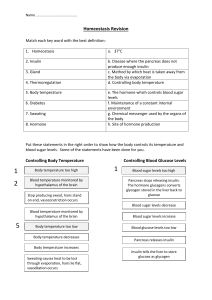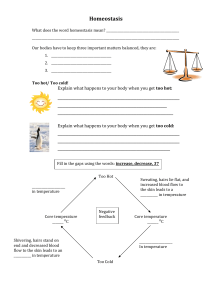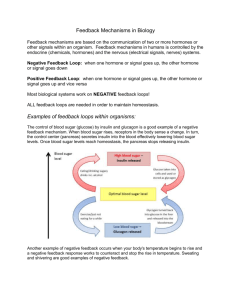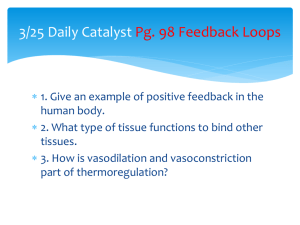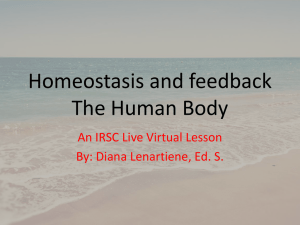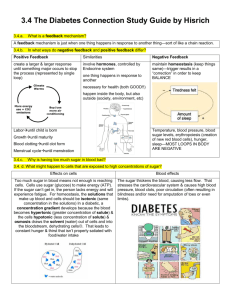Homeostasis - staying in balance Task
advertisement
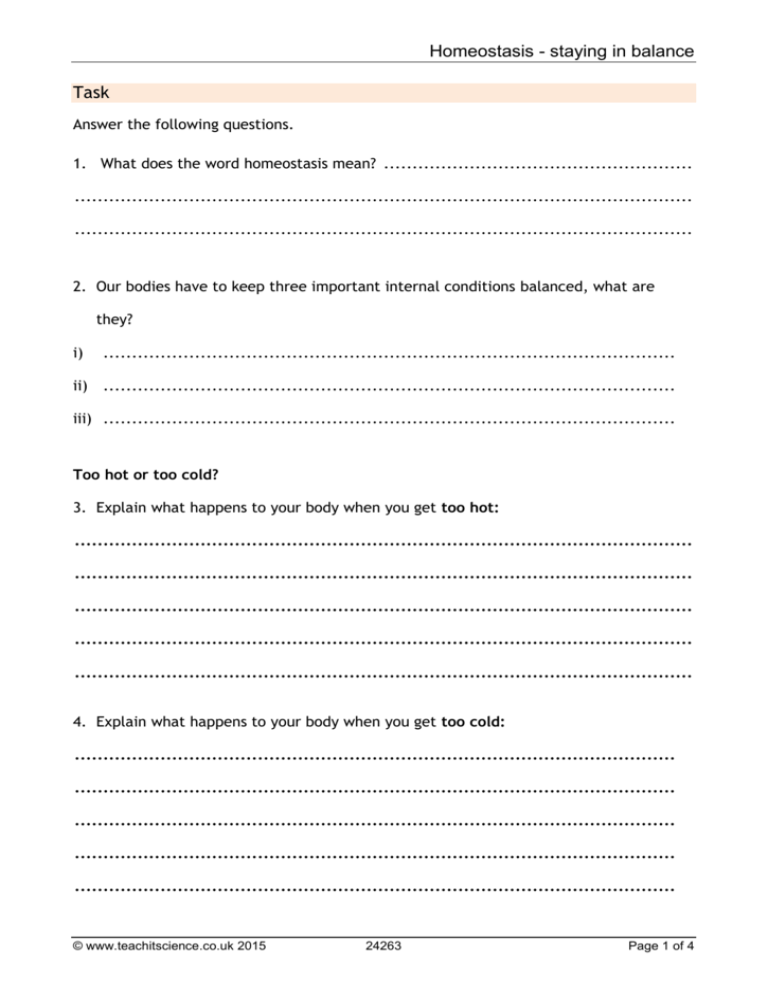
Homeostasis - staying in balance Task Answer the following questions. 1. What does the word homeostasis mean? ...................................................... ............................................................................................................ ............................................................................................................ 2. Our bodies have to keep three important internal conditions balanced, what are they? i) .................................................................................................... ii) .................................................................................................... iii) .................................................................................................... Too hot or too cold? 3. Explain what happens to your body when you get too hot: ............................................................................................................ ............................................................................................................ ............................................................................................................ ............................................................................................................ ............................................................................................................ 4. Explain what happens to your body when you get too cold: ......................................................................................................... ......................................................................................................... ......................................................................................................... ......................................................................................................... ......................................................................................................... © www.teachitscience.co.uk 2015 24263 Page 1 of 4 Homeostasis - staying in balance 5. Complete the diagram below using the words: increase, decrease, 37 ................................ in temperature Core temperature ............................. ⁰C Shivering, hairs stand on end and decreased blood flow to the skin leads to an ............................... in temperature Too hot Negative feedback Sweating, hairs lie flat, and increased blood flow to the skin leads to a .............................. in temperature Core temperature ............................. ⁰C ................................ in temperature Too cold 6. How can the core body temperature be measured? ......................................................................................................... ......................................................................................................... 7. Very high and very low body temperatures If you get too cold you can develop If you get too hot you can develop .......................................... .......................................... .......................................... .......................................... © www.teachitscience.co.uk 2015 24263 Page 2 of 4 Homeostasis - staying in balance 8. Blood glucose levels Use the keywords below to complete the paragraph. inject sugar pancreas hormone food diabetes levels blood insulin Some people suffer from a disease called ............................. . They do not produce enough of a ...................... called .................... from the organ in the body called the .......................... . Insulin controls the ..................... .................. levels. Diabetics have to be careful that they do not eat too much sweet ........................ . They may also need to ............................. themselves with the hormone insulin to help control their blood sugar .............................. . 9. What is a hormone? ......................................................................................................... ......................................................................................................... ......................................................................................................... ......................................................................................................... ......................................................................................................... ......................................................................................................... ......................................................................................................... © www.teachitscience.co.uk 2015 24263 Page 3 of 4 Homeostasis - staying in balance Answers 1. The maintenance of a constant internal environment 2. i) water ii) blood sugar iii) temperature 3. Too hot: Sweat – water evaporates from skin takes heat with it Blood vessels dilate – brings blood to surface and loses heat Hairs lie flat – no insulation – catch breeze Consciously take off layer of clothes /turn thermostat down 4. Too cold: Stop sweating – no heat loss Blood vessels constrict – less blood to cold surroundings – keep warm Hairs stand on end – trap air – insulates Consciously – turn heating up/ put coat on 5. Too hot Increase in temperature Core temperature 37⁰C Shivering, hairs stand on end and decreased blood flow to the skin leads to an increase in temperature Negative feedback Sweating, hairs lie flat, and increased blood flow to the skin leads to a decrease in temperature Core temperature 37⁰C Decrease in temperature Too cold 6. Thermometer or temperature strip across head 7. If you get too cold you can develop frostbite or hypothermia If you get too hot you can develop heat stroke 8. Blood glucose levels Some people suffer from a disease called diabetes. They do not produce enough of a hormone called insulin from the organ in the body called the pancreas. Insulin controls the blood sugar levels. Diabetics have to be careful that they do not eat too much sweet food. They may also need to inject themselves with the hormone insulin to help control their blood sugar levels. 9. A chemical released by a cell or a gland in one part of the body that sends out messages that affect cells in other parts of the organism © www.teachitscience.co.uk 2015 24263 Page 4 of 4
